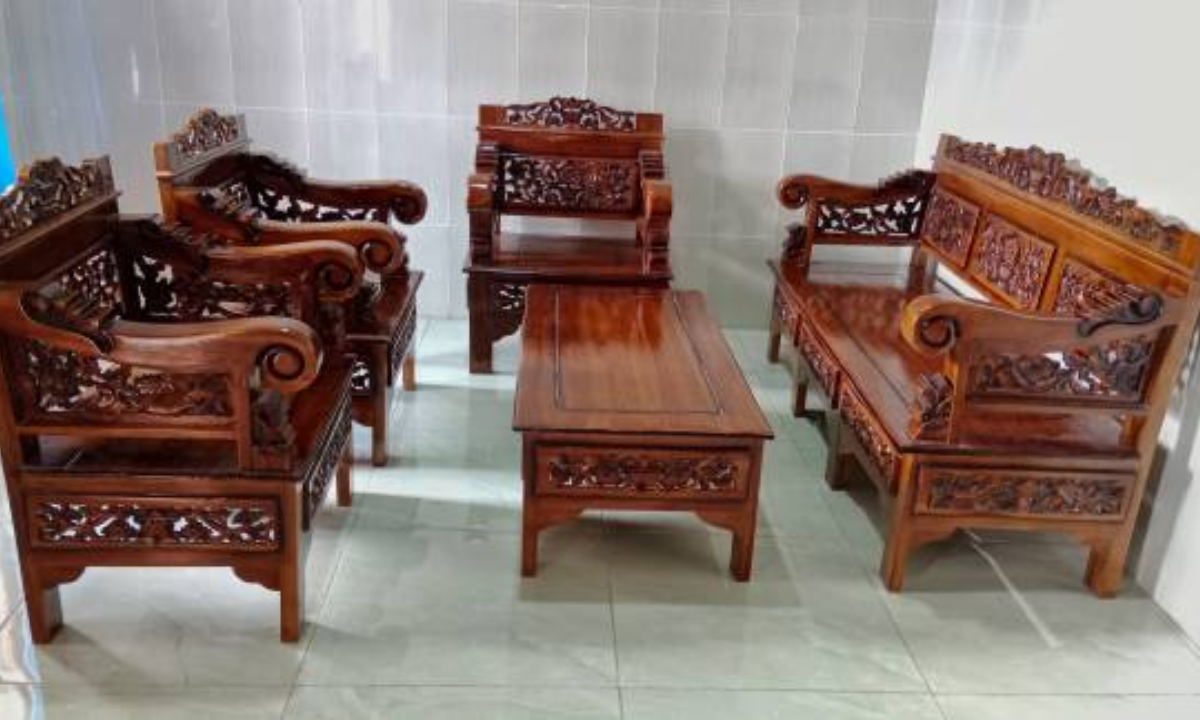Rosewood is a thick, perfectly-grained tropical hardwood that has been valued for quite a long time for its appearance and properties. In this article, we will explore a part of the surprising qualities that make rosewood such a positive wood for fine decorations, instruments, and various applications.
Distinctive Appearance
One of the first things anyone notices about rosewood is its striking appearance. The wood arrives in a wide assortment of varieties going from pale pink to profound rosy brown, with more obscure streaks and markings. On some varieties, the grain pattern resembles flowing rivulets or the veins of a leaf. Due to its dramatic coloration and figuring, rosewood takes stains and finishes exceptionally well, bringing out its natural beauty.
Even as it ages, rosewood acquires a lovely patina without losing its rich hues. Its appearance alone settles on rosewood, a famous decision for embellishing pieces and very good quality applications where feel is fundamental.
Hardness and Thickness
Rosewood is eminent for its outrageous hardness and thickness, which contribute extraordinarily to its solidness. On the Janka hardness scale, which measures a wood’s resistance to denting and wear, most rosewood varieties rate between 1,320 to 2,550 lbf—making it one of the hardest woods in the world. Its tight grain structure and lack of pores or vessels mean rosewood is very resistant to damage from impact, abrasion, and compression.
This density also gives it excellent dimensional stability; it does not expand or contract much with changes in humidity. Rosewood’s hardness has permitted it to endure weighty use for quite a long time in applications like deck and device handles that require extraordinary strength.
Odor and Workability
While rosewood’s density makes it challenging to work with traditional woodworking tools, it also offers some advantages. The wood has a light, pleasant aroma when being cut or sanded that is preferred by many over stronger odors from other exotic woods. Its small pores mean rosewood produces very little sawdust mess.
However, due to its hardness, carbide-tipped blades and router bits are necessary to shape rosewood efficiently without dulling standard steel tools quickly. Care must also be taken to avoid fracturing the wood during machining operations given its brittleness. With the right tools and techniques, rosewood can be smoothly worked, finished, and maintained.
Acoustic Properties
Musicians and instrument makers have long recognized rosewood’s superb acoustic qualities. Several varieties—including Indian rosewood, Brazilian rosewood, and Madagascar rosewood—are preferred for guitar backs, sides, and fingerboards due to their ability to resonate sound. The dense, tight-grained structure of rosewood vibrates readily without absorbing excessive overtones.
It furnishes a decent tone with rich bass and midrange that upgrades numerous stringed and percussion instruments. While alternative woods are now more commonly used on guitars, rosewood remains the gold standard for acoustic properties in the music industry.
Sustainability Issues
Unfortunately, the worldwide popularity of rosewood has led to severe overexploitation and depletion of natural forests in recent decades. A few animal types are currently recorded as imperiled by Refers to (the Show on Global Exchange Jeopardized Types of Wild Fauna and Greenery) because of unlawful logging and environment obliteration. Brazilian rosewood has been essentially extinct in the wild since the 1990s.
Acquiring rosewood from efficient and legal officer administration exercises is basic to shield biodiversity and local organizations that rely upon these boondocks. Many instrument makers and woodworkers now favor alternatives that are not threatened, though real rosewood still has desirable qualities that are difficult for other woods to match entirely. With legitimate guideline and dependable stewardship, rosewood might recuperate over the long run.
Different Applications
Past furnishings, ground surface, and instruments, rosewood has found involves in different applications because of its sturdiness and appearance. Rosewood facade give a rich, sturdy surface for structural millwork, cabinetry, and extravagance yachts or airplane insides.
While alternative domestic hardwoods can sometimes substitute for rosewood, exotic rosewood varieties still command high prices due to their rarity and exceptional characteristics prized by craftspeople.
How do you identify genuine rosewood vs. lookalikes?
Here are some key things to look for to identify genuine rosewood versus lookalike species:
1. Color Variation – Genuine rosewood will display a range of tones from light to dark brown/red, sometimes with purple or pink hues. Lookalikes often have uniform coloring.
2. Figuring – The grain pattern of rosewood, like interlocking lines or rivulets, tends to be more dramatic and distinct than substitutes.
3. Density – Rosewood is extraordinarily dense, usually weighing over 50 lbs per cubic foot. Lookalikes will feel significantly lighter when held.
4. Scent – Freshly cut or sanded rosewood has a sweet, aromatic scent due to its oils. Lookalikes may have no odor or a different one.
5. Pores – Under magnification, rosewood lacks vessels or pores in its tight grain structure. Some substitutes have noticeable pores.
6. Hardness – Rosewood rates very highly on the Janka hardness scale, over 1500 usually. Lookalikes will be softer and more prone to dents/marks.
7. Grain – The grain in genuine rosewood is extremely small and even, while some substitutes have larger, more porous grain.
8. Sustainability – Only true rosewood species are now protected and should be sourced from certified sustainable/legal forestry operations to avoid illegally logged wood.
Careful inspection of these visual/physical properties is needed to verify genuine rosewood, as some substitute woods try to closely mimic its appearance. But an experienced woodworker can usually tell the difference.
Conclusion
Summing up, rosewood genuinely is a novel and sumptuous material that has legitimately procured its high status over hundreds of years of purpose. Its extraordinary hue, sensational figuring, outrageous thickness and hardness have settled on it the head decision for applications where excellence, acoustic properties, and toughness are fundamental. While environmental pressures now necessitate more sustainable sourcing, rosewood still holds attributes that are virtually unmatched by any other wood species.
With proper stewardship and regulation, rosewood forests may recover, allowing future generations to continue appreciating this special tropical hardwood. Whether admiring its lustrous grain in fine furniture or feeling its superb resonance in a musical instrument, the characteristics of rosewood leave an enduring impression.



